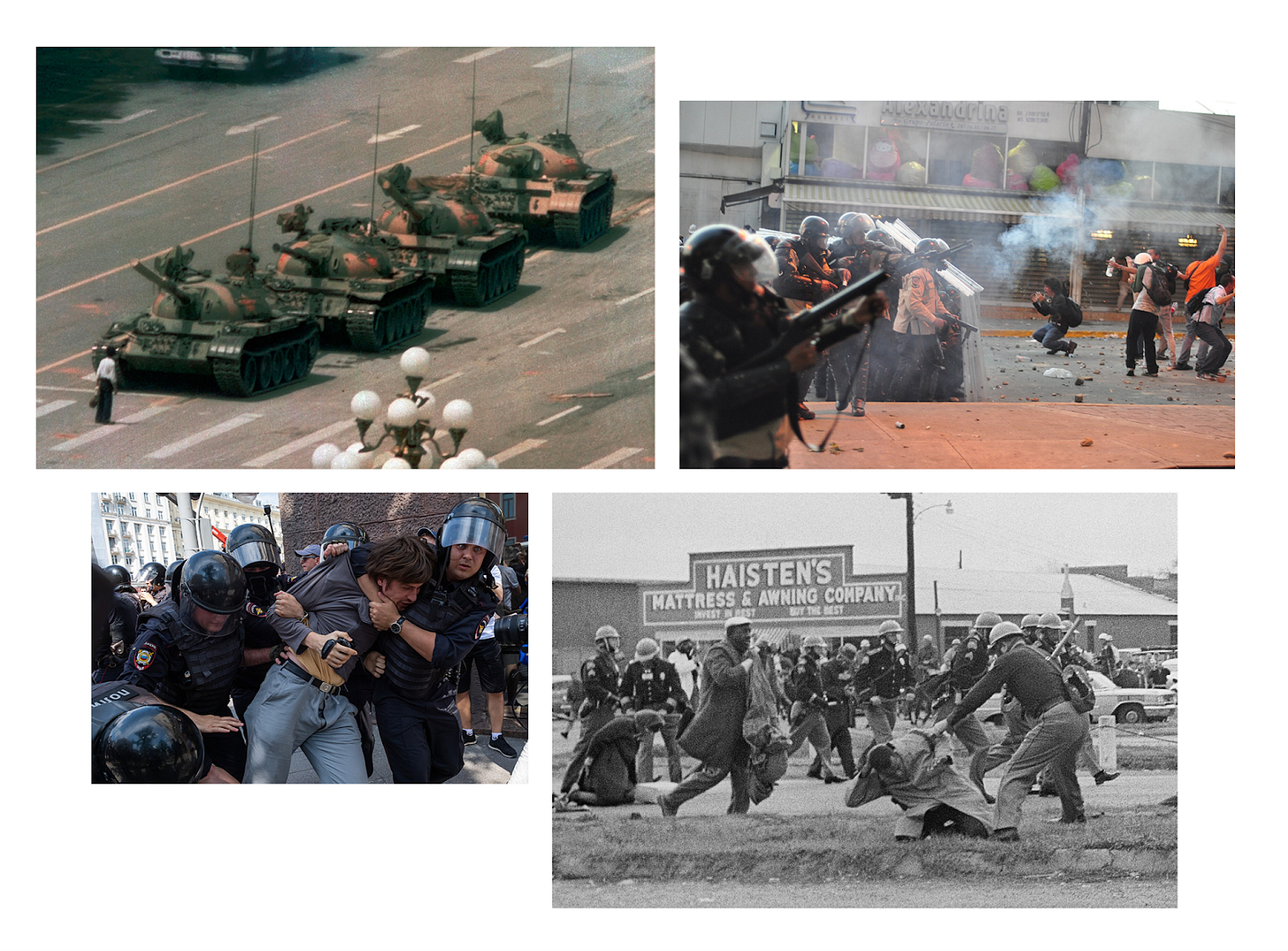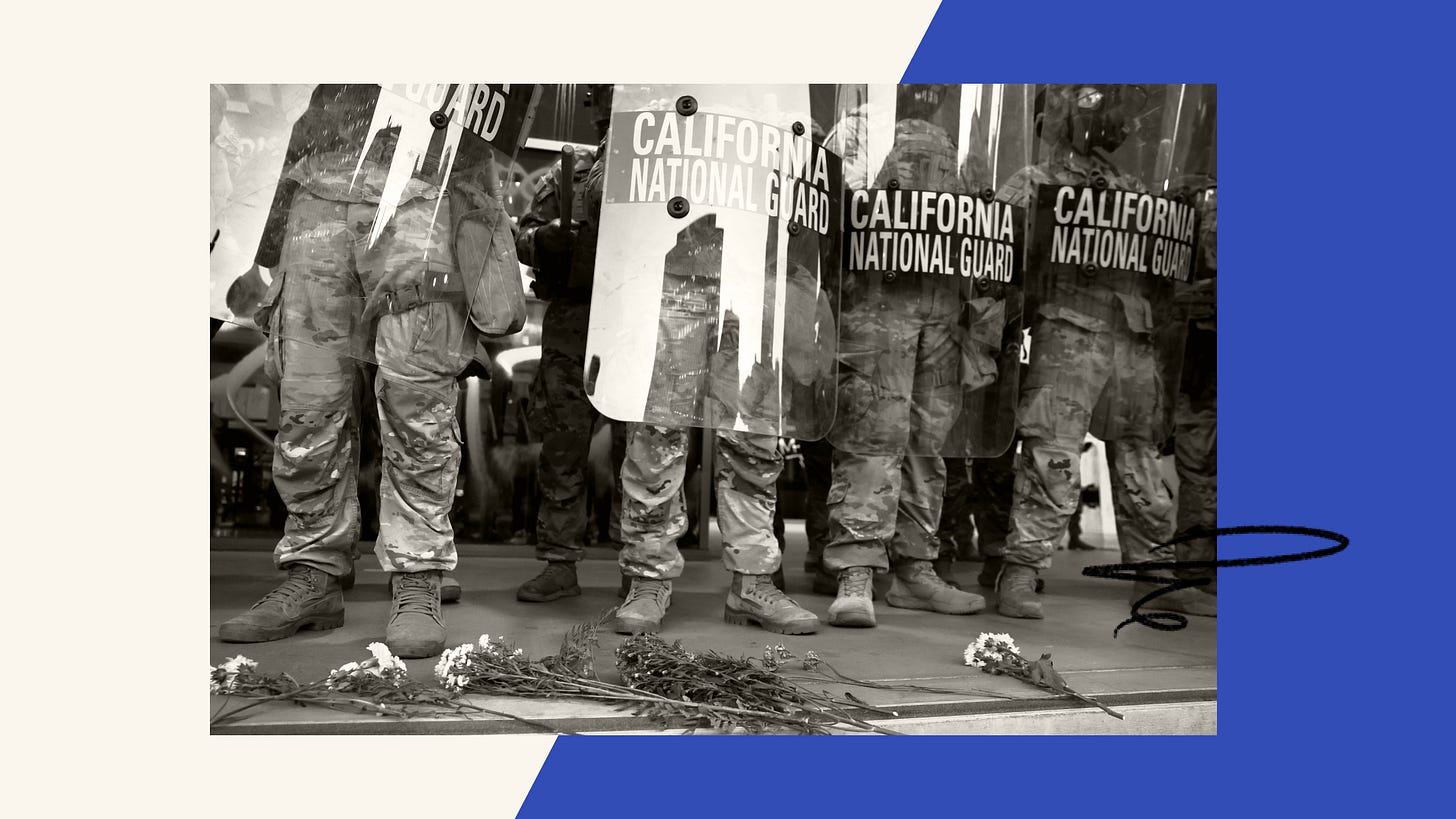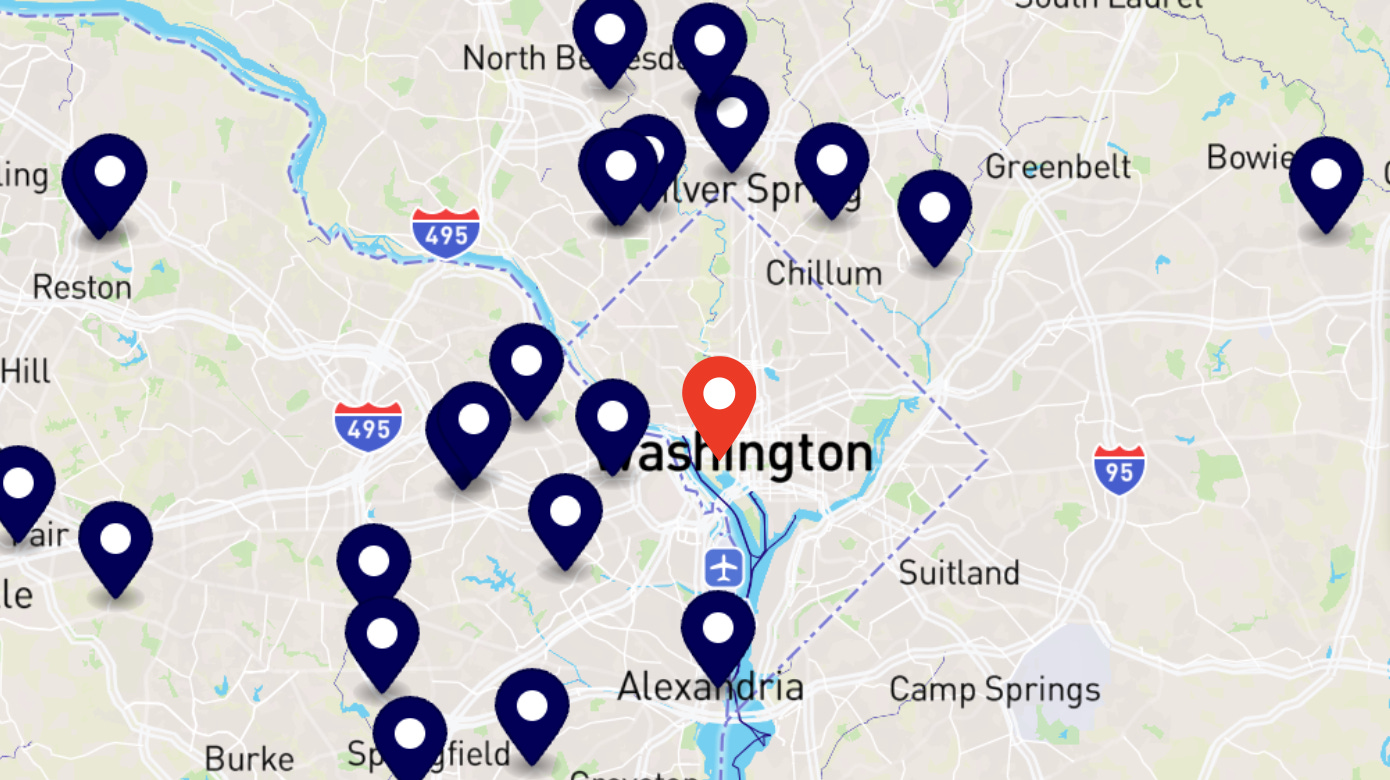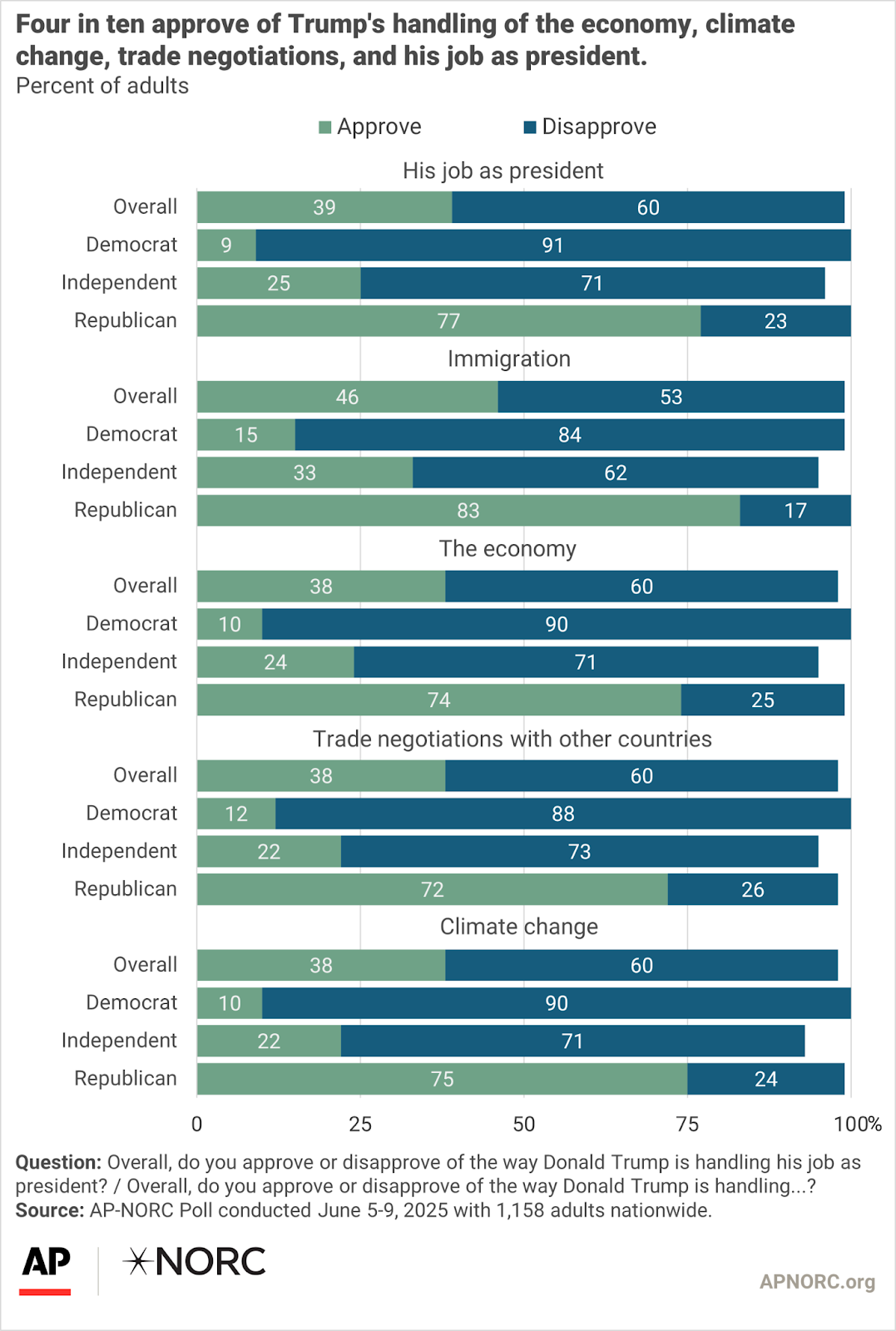The president is running out of time to consolidate power.
We’re now almost a quarter of the way through the 119th Congress, the two-year period where his party is guaranteed complete control of the federal government. He has signed essentially no legislation into law (executive orders may be harmful, but they are not the same thing). His singular legislative priority, the reconciliation bill, is struggling after his top lieutenant, Elon Musk, broke with the administration and attacked the bill.
Yes, the White House’s attacks on independent universities, science, the media, law firms, the judiciary, civil society, and the civil service (any one of which would have been a presidency-ending scandal in a prior administration) continue unabated. But I’m not sure they’re working as intended.
We are not yet — and this is worth stressing — anywhere close to the sort of anticipatory obedience, autocratic capture, and broad acquiescence from civil society that are necessary for a leader to entrench himself in power beyond the reach of the voters. If anything, the project is stalling: Trump’s approval ratings are historically negative, his attempts to renegotiate trade deals and peace deals have been mostly failures, and the catastrophic harms caused by his assaults on science, research, and government services are only just beginning to be felt.
Instead of being cowed, far more Americans are visibly and loudly opposing him than last time. (Per the Crowd Counting Consortium: “Through May 2025, the size and scale of anti-Trump protests have dwarfed those in 2017.”)
So now, as Jessica Marsden predicted a month ago, Donald Trump is escalating:
In a highly unusual and inflammatory move, the administration ordered 4,700 National Guard and Marine troops into Los Angeles, significantly escalating tensions on the ground and fomenting a potential lethal outcome.
He gave a vitriolic and politically charged speech at Fort Bragg, goading active-duty servicemembers to jeer and boo his political rivals. (The crowd, per Military.com, had been hand-picked for political allegiance and appearance.)
The Justice Department indicted a sitting Democratic Member of Congress and arrested a prominent and respected labor leader.
Tomorrow, on his birthday, he has planned a North Korea-style military parade of tanks and missiles through Washington, D.C.
And, finally, a U.S. senator was thrown to the ground and handcuffed for attempting to ask a cabinet secretary a question at her press conference in his state:
These moves are purposefully, deliberately provocative.
We can’t say for sure that this is all designed to stoke violence, but I have to say: They are indistinguishable from what a purposeful strategy would look like. As such, it’s hard not to conclude that the White House is seeking a militarized and violent clash with the very people they are tasked with protecting — a conflagration that might allow them to reverse their stalling momentum and fully consolidate power.
“If there’s any protest that wants to come out,” Trump threatened, “they will be met with very big force.”
There will be protests tomorrow. They’re happening in over 2,000 places, essentially every city and town in the country except for one: Washington, D.C.
That’s part of why I see no evidence suggesting they will be the violent, militarized conflagration that Donald Trump so clearly craves. Organizers are smartly and carefully planning to maximize peaceful visibility away from Trump’s militarized circus. Here’s the map of protests in the D.C. area (blue) — nothing within miles of the birthday parade (red):
To be clear, though: While organizers go to great lengths to ensure these protests are peaceful exercises of First Amendment rights, they don’t control everyone. These are public spaces in which any common vandal or provocateur could show up — the same way they could show up any day of the week. And we know that the White House will relish the opportunity to direct media attention towards isolated incidents to distract from and malign the rights of those patriotically and responsibly standing up for democracy.
This possibility — of renegade actors seeking disruption — is precisely why numbers matter so much. If everyday Americans continue to mobilize en masse to peacefully express their First Amendment rights, they effectively refuse to cede civic space both to the White House’s blatant militarization attempt and to isolated actors.
The more families and retirees and grandparents and union members and musicians and teachers and cyclists and picnicgoers and farmworkers and scientists and dancers and truck drivers and artists and students that show up, the less likely it is that their voices and genuine disagreement with the administration's actions will be minimized, ignored, or painted as fringe or extremist.
When the sort of Americans who don’t usually protest show up this weekend, they will reveal the emptiness of the administration’s dangerous and fundamentally un-American gamble.
Trump’s show of force is about weakness, not strength
Usually, autocrats around the world try to avoid the sort of images of violence against protestors that Trump is actively seeking to create.
Images of state violence against protesters have rocked — or even helped bring down — authoritarian regimes around the world and throughout history.

In countless cases — from Mexico to Egypt to Tunisia to Argentina to Russia — violent overreaches by security forces contributed to the eventual downfall of autocrats. Here in the U.S., images of the violence by police against peaceful Civil Rights protestors woke the rest of the country up to the autocratic reality of the Jim Crow South. In China, the Tiananmen Square Massacre shook the authoritarian regime so badly that, even to this day, any mention of the event is tightly censored both online and off. The Chinese government quite literally seeks to erase that history.
So why is Trump seeming to seek the sort of televised conflict with protestors that autocrats generally avoid? It all comes down to power.
Autocrats who are secure in their power — Xi, Putin, Orbán, etc. — understand that images of chaos and violence and repression are likely to undermine their popularity and therefore their regime.
Importantly (and counterintuitively), modern autocrats generally still care very much about their approval ratings. It’s part of how they maintain power in competitive authoritarian regimes. In fact, many of their tactics — from capturing the media to quashing dissent — are about keeping their approval as high as possible even if they have to manipulate and corrupt the ecosystem to do that.
Those autocrats know that images of brutality can only weaken their relatively absolute power. But this White House does not have a lock on power — quite the opposite. Not only is the entrenchment project stalling, but their popularity is dropping quickly. Look at this new poll from the AP:
Those are devastating figures for Trump’s attempts to consolidate an authoritarian project. (And this isn’t a one-off. A different poll this week from Quinnipiac, another highly rated pollster, found similar numbers.)
So, as a desperate effort to try to reverse that momentum — he is doubling down. The White House is gambling that images of chaos, no matter how limited in their actual scope, can be used to generate support for a crackdown and outweigh the perception of militarized overreach.
This is a precarious — but critical — moment for our democracy
None of this means the administration’s moves aren’t dangerous. Quite the opposite. The president is dangerous because of his weakness.
The gamble could succeed in providing a pretextual justification for a massive crackdown that gets the authoritarian project back on track. Or the administration’s actions could simply cause substantial collateral damage as the escalation continues.
In any case, the response for all Americans who care about their democracy is clear:
Speak up peacefully and loudly while avoiding confrontation. For the vast majority of Americans, there is little to no risk that protests will be met with force. Our constitutional rights to protest and assemble are still broadly respected across the country. Instead of submitting to attempted intimidation, we need to drown it out with peaceful, clear mobilization.
Do not accept the narrative of a crackdown. As the White House is escalating, they are looking for pretexts and excuses to justify a crackdown. Just as Americans must avoid giving them that pretext, all of us must be careful to not legitimize or amplify that false narrative.
Find joy and don’t give in to fear. As part of the escalation strategy, the White House wants you to be angry and afraid. They seem to be aiming to provoke emotional reactions on the part of their opposition. I’ll admit that it’s worked for me at certain points this week. But going forward, we must all be careful not to give in to the cycle of anger that the administration is attempting to create. Instead, find joy and community. We still live in a democracy. Just as we defend it, let’s celebrate it.
There’s no reason to expect the president will get the conflagration he is apparently looking for. All it takes is for the attempt at violent militarization to be instead met with a peaceful, civic, and political bulwark that refuses to either bow down or take the bait. Then the gamble will fail and our democracy will endure.
Everything hinges on how we show up.
Former national security leaders on the deployment of military forces to L.A.
Normally I make a point to try not to direct you to legal briefs, which I know aren’t everyone’s cup of tea.
I’m going to make an exception for this amicus brief filed by a group of former Army & Navy secretaries and retired four-star admirals & generals in California’s lawsuit against the Trump administration’s decision to send National Guard and Marines into Los Angeles.
Deployment under these circumstances poses multiple risks to the core mission of the National Guard and the Marines, and to the well-being of the troops. First, deploying military personnel in the context of domestic law enforcement diverts them from their primary mission, which is national security and disaster response, at the expense of local, state, and national safety. Second, National Guard personnel and active-duty Marines are not trained or qualified to conduct domestic law enforcement operations, which poses a danger to the safety of both the troops and the public. Third, the use of federal military personnel in the context of law enforcement operations should be a last resort to avoid the politicization of the military, which inevitably erodes public trust, impacts recruitment, and undermines troop morale.
What’s happening in Los Angeles is not just a threat to civil liberties. It risks badly undermining the military and its nonpartisan mission.
Read the whole brief.
What else we’re tracking:
Are reporters doing a good job of covering protests? Jennifer Dresden, a political scientist, and Maximillian Potter, a journalist and National Magazine Award finalist, have four questions that you should be asking of your media diet.
Emergency powers have become central to Trump’s governing philosophy, writes Naftali Bendavid in the Washington Post. Says Kristy Parker: “Emergency powers are like manna from heaven for someone like him. He can just wave a wand in the form of an executive order and absolve himself, as he sees it, from the need to answer to Congress.”
The latest administration attack on the nonpartisan civil service is complex and bureaucratic — but you can help stop it by filing a comment today. Here’s how: The “patriot” in the cubicle next door.
A small win for democracy: Attorney General Pam Bondi’s brother, Bradley, was running for president of the DC Bar. He lost in a landslide.
Final note: A small time capsule from to 2008. Watch how a different Republican president talked about protest and dissent — and how badly we’ve slid backwards. (Hat tip: Mark Copelovitch)
Instead of what you can do to help this week, a question: How can we better help you?






We all know Trump is looking for optics, and a protest he can recast as lawlessness and riots is exactly the kind of "conflagration" we don't need. But Ben Raderstorf provides much-needed perspective and good advice here. We must not let a desperate, flailing autocrat drag us into his dangerous game. Stay strong, speak forcefully, but stay in control.
“Everything hinges on how we show up.” Absolutely. Keep our collective cool and defeat Trump’s plan.